Get Best Treatment for Glaucoma (Kala-Motia)
- An affordable and best Glaucoma treatment by the top eye surgeons
- Most advanced treatment of Glaucoma
- Free Online consultation on Glaucoma
Glaucoma: What Is It?
Glaucoma is generally associated with a build-up of pressure inside the eye also called Intraocular Pressure (IOP). This happens when the fluid, aqueous humour inside the eye stops draining from the eye.In Glaucoma, the eye fluid drainage system gets blocked leading to pressure build-up. The fluid pressure build-up can be attributed to the deterioration of the optic nerve as well as genetic factors. The optic nerve of the eye is responsible for transmitting images to the brain.
Glaucoma, if not corrected or treated, can lead to severe damage as well as complete loss of vision. Many a time, glaucoma causes no pain or discomfort until the vision loss starts. Hence, it is essential to do regular check-ups to detect and treat eye diseases like glaucoma. Consult with Eye Mantra, to get in touch with the best Ophthalmologist across Delhi/ NCR providing the best Glaucoma consultation.
Types Of Glaucoma
OPEN-ANGLE GLAUCOMA (OAG)
Variants of open-angle glaucoma include:
- Primary Open-Angle Glaucoma (POAG)
- Normal-Tension Glaucoma (NTG)
- Pigmentary Glaucoma
- Pseudoexfoliation Glaucoma
- Secondary Glaucoma
NORMAL TENSION GLAUCOMA
Normal-Tension Glaucoma (also called Low-pressure Glaucoma) is very similar to POAG, which leads to field vision loss as a result of optic nerve damage.
PRIMARY OPEN-ANGLE GLAUCOMA(POAG)
POAG is a very common type of glaucoma. In this type of eye defect, the peripheral vision of a person is diminished without presenting any other symptoms.
PIGMENTARY
GLAUCOMA
This is a rare form of Glaucoma and it is caused by the clogging of the drainage angle of the eye. This usually affects 30-40 years of age.
ACUTE ANGLE-CLOSURE GLAUCOMA
Acute Angle-Closure Glaucoma produces sudden symptoms such as eye pain, headaches, halos around bright lights, dilated pupils, red eyes, nausea etc.
SECONDARY
GLAUCOMA
This is a type of glaucoma that could arise from factors other than natural factors and could be attributed to things like an eye injury or an infection, inflammation>
ANGLE-CLOSURE GLAUCOMA
The type of Glaucoma in which the fluid cannot access the drainage angle of the eye.This happens because the drain space between the iris and cornea becomes too small.
CONGENITAL
GLAUCOMA
This is a type of glaucoma which children inherit at birth from their parents. These kids are born with a defect in the drainage system.
Glaucoma Symptoms
Glaucoma has been deemed by many doctors as the ‘silent thief of vision ‘ as it presents next to none or very few symptoms and many symptoms present themselves only after significant damage has been done to your vision. However, based on what type of glaucoma you might have there are certain symptoms that might be for early detection and management of glaucoma. They are:
Common symptoms:
- Inflammation inside the eyes can cause halos in vision.
- Light Sensitivity (Bright lights cause a problem in the eyes)
- Morning headaches
- Cataracts
- Nausea and Vomiting
Symptoms of Open-Angle Glaucoma
Sadly, this type of glaucoma presents no symptoms before there has been a significant loss of vision. It is advised that if you feel at risk of glaucoma due to family history, you should keep getting comprehensive eye examinations regularly. This will help track, diagnose, and help manage this defect better.
Symptoms of Chronic Open-Angle Glaucoma (COAG)
The first sign of this type of glaucoma is a loss of side vision/ peripheral vision. However, the changes are subtle and hence can be tough to acknowledge.
Symptoms of Acute Closed-Angle Glaucoma
Many people have described this as “the most traumatic eye pain of my life”. This glaucoma type produces some of the most painful symptoms:
- Throbbing eye pain
- Reddening of the eye
- Aching Head
- Blurring of Vision
- Dilation of Pupils
- Vomiting and Nausea
Symptoms of Congenital Glaucoma
Congenital glaucoma occurs in kids during birth and the symptoms for the same could pop up in the first few years itself. These include:
- tearing, sensitivity to light,
- eyelid spasms,
- enlarged cornea and clouding of the transparent cornea,
- habitual rubbing of the eyes,
- Glaucomaing, or keeping eyelids close the majority of the time.
In case you’ve had an injury to your eye, inflammation, or even an advanced cataract, there are chances for glaucoma and in most of these cases, your ophthalmologist will check whether or not you have glaucoma as well.
Who is at Risk of Glaucoma?
You are at risk of glaucoma if you:
- Belong to the age group of 40 or above.
- Have a family history of Glaucoma problems.
- Individuals having high eye-pressure.
- Have far-sightedness (Myopia) and/or near-sightedness (Hyperopia).
- Have gone through serious eye injuries.
- Have had long-term use of steroids or other medications.
- Have corneas in the centre.
- Are suffering from thinning of the optic nerve.
- Have immuno-deficiencies like diabetes, migraines, high blood pressure and have poor blood circulation.
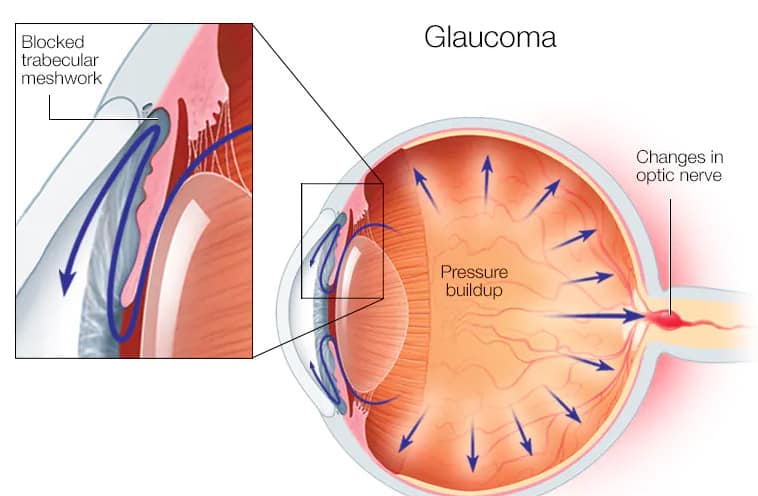
Glaucoma Prevention
Glaucoma is not a condition that presents any noticeable symptoms until ill effects begin. This disease can also not be fully treated, it just needs to be managed, therefore, it is vital to understand how to reduce the risk of complete loss of vision. Here are some steps to reduce the risks of glaucoma.
Since there are no apparent symptoms at first it is advisable to get a comprehensive eye examination once every few weeks or at least 1 month.
- Do not stop taking corrective eye drops prescribed by the ophthalmologist even though they might be causing slight discomfort.
- Informed management of the condition along with ongoing follow-up exams is pivotal to eliminate vision loss.
- Many researchers have found that regular exercise, maintaining a fit and active lifestyle along with dropping bad habits like smoking and alcohol could go a long way in preventing as well as managing glaucoma.
Treatment for Glaucoma
Initially, your eye doctor will give you a prescription eyedrop or some form of oral medicine to ease the pressure on the eyes. However, if these drugs do not produce any results, surgery will be required to avoid loss of vision.
Surgery has not been advised as the first solution to treat glaucoma. However, if the condition of your eye is getting progressively worse then you should consider resorting to it. If other treatments and management techniques fail to produce the desired results.
Glaucoma Surgery
Various Types of Surgical Procedures for treating Glaucoma are as follows:
Laser Surgery
This is used to clear up the clogged tubes and relieve the built-up fluid pressure. Laser surgical procedures for glaucoma are also of several types as listed below:
- Argon Laser Trabeculoplasty (ALT)
- Selective Laser Trabeculoplasty (SLT)
- Laser Peripheral Iridotomy (LPI)
- Cyclophotocoagulation
Trabeculectomy
In this procedure, the surgeon will make a small cut in the sclera (white part of the eye) and remove some mesh of tissue. This is supposed to help with the drainage of fluid in the eye and relieve some IOP pressure.
Drainage Implant Surgery
Since in glaucoma, the drainage system of the eye starts faltering, one of the ways to drain the fluid from the eyes is to implant an artificial system with a tube to drain out the fluid.
Electrocautery
In this procedure, the surgeon uses a heating device called a Trabectome to make an incision in the eye’s drainage tube. This sends heat to the mesh of the tissue and helps relieve the fluid build-up as well as the pressure.
Glaucoma Surgery Risks
No surgical procedure is free from complications. Here are some of the risks and complications that can occur with surgical treatment for glaucoma.
- Eye Pain or Redness
- High or too low Eye pressure
- Infection
- Cataract development later in life
- Inflammation
- Bleeding in the eye.
Glaucoma Surgery Cost
The complete cost of Glaucoma treatment depends upon the type of procedure or testing that you go through. The cost of treatment varies between Rs.3,000 to Rs.10,000. Below are estimated cost of some of the procedure, injections, testing and surgery involved in treatment of Glaucoma:
| Treatment | Cost (₹) |
|---|---|
| OCT | 2000-3000 |
| Yag Laser (Single eyes) | 2000-3000 |
| Green Laser (Single Eye) | 2000 – 3000 |
| YAG iridotomy | 2000 – 3000 |
| Gonioscopy | 500 – 1000 |
| Visual Field Test | 1000 – 2000 |
| Corneal pachymetry | 500 – 1000 |
Eye Mantra Foundation provides charitable or free glaucoma treatment services to the underprivileged sections of society. So an individual who needs eye treatment, but is unable to afford the Glaucoma treatment expenses, can come to our hospital and his entire treatment will be done free of cost or at a very nominal price.
Best Eye Hospitals for Glaucoma treatment
India has one of the best eye hospitals for cataract surgery such as AIIMS, Sankara Nethralaya, LVPEI and Eye Mantra. Eye Mantra is one of the leaders in Glaucoma treatment with over 1,000+ eyes operated so far by its doctors.
At Eye Mantra, we offer the bestGlaucoma treatment in India. Our wide range of services includes Glaucoma treatment and Glaucoma management, based on laser and other surgical procedures at an affordable cost in Delhi-NCR.
Glaucoma Doctors

Oculoplasty

Femtosecond Lasik

Femtosecond Lasik

Cataract, Retina, Glaucoma, Lasik
Glaucoma Facilities
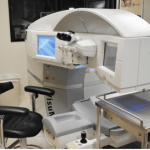
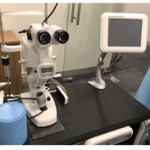


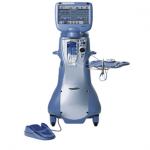


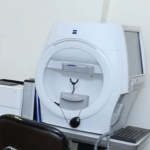
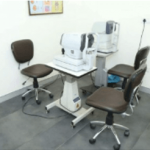
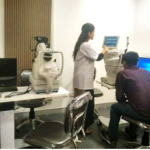
Frequently Asked Questions
Glaucoma is generally associated with a build-up of pressure inside the eye also called Intraocular Pressure (IOP), this happens when the fluid inside the eye aqueous humour stops draining from the eye.
Variants of open-angle glaucoma include Primary Open-Angle Glaucoma (POAG), Normal-Tension Glaucoma (NTG), Pigmentary Glaucoma, Pseudoexfoliation Glaucoma and Secondary Glaucoma.
If you are experiencing inflammation inside the eyes, halos in vision, light sensitivity etc then you should get tested for Glaucoma.
The cost of “Glaucoma testing” inclusive of “Fields +OCT + Pachy+ Gonio”, will be Rs.3,000. Other tests cost under 3000 Rs here at Eye Mantra.
No surgeries are free of risks. Some of the risks associated with Glaucoma Surgery are redness, pain, bleeding in the eye. You can also develop Cataracts later.
Blindness is one of the most adverse effects of glaucoma. And even though it is not necessary if you get diagnosed and treated at the right time then you can avoid loss of vision from Glaucoma.
There is no defined normal eye pressure as such but an average person has IOP between 12-22 mg Hg.
Although it is not recommended by optometrists marijuana is scientifically known to reduce eye pressure for a few hours. But since treating Glaucoma requires releasing pressure from the eye for the whole day, it is not feasible.
Even if one were to opt for this they’d have to consume copious amounts of it, which has considerable effects on the body.
There are multiple good Glaucoma surgeons in India. Eye Mantra has some of the top Glaucoma doctors / surgeons. Dr. Shweta Jain is one of the best Glaucoma surgeons in India. Dr. Shweta Jain has successfully performed more than 1000+ Glaucoma surgeries so far. The results from the Eye Mantra Glaucoma surgery program turns out to be better for many people. Post Glaucoma surgery, multiple patients experience improved appearance & depth perception